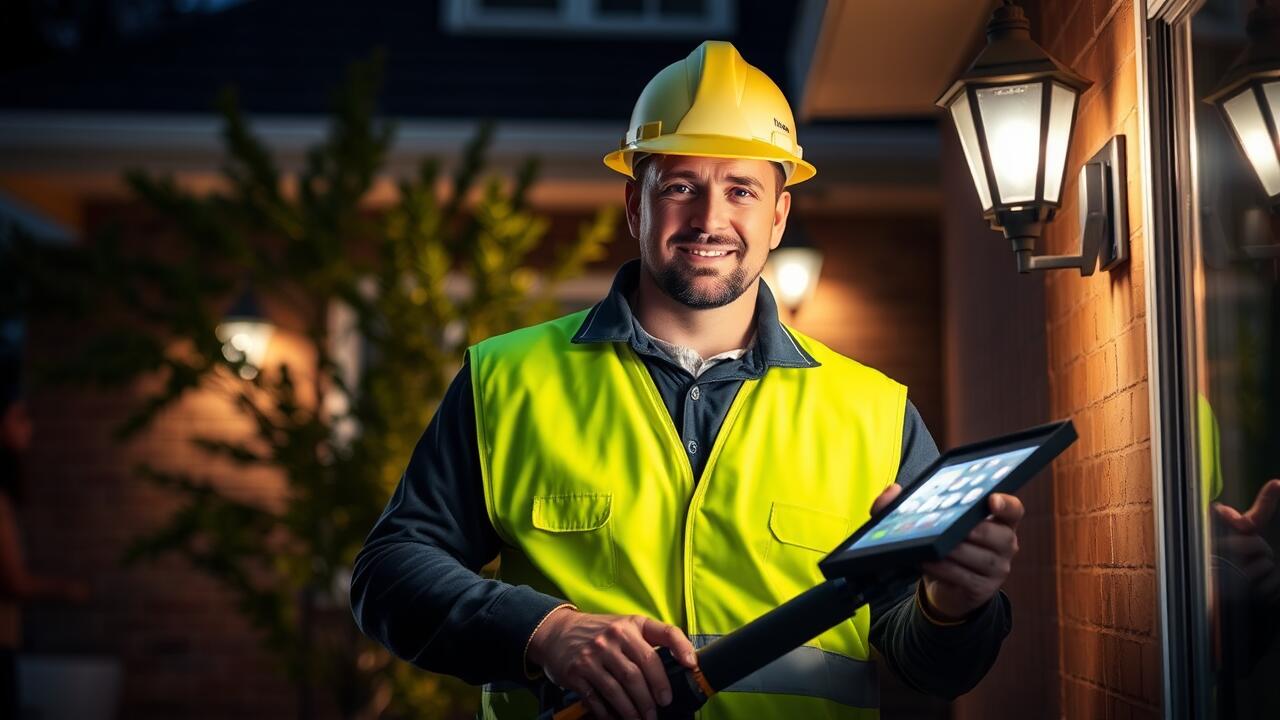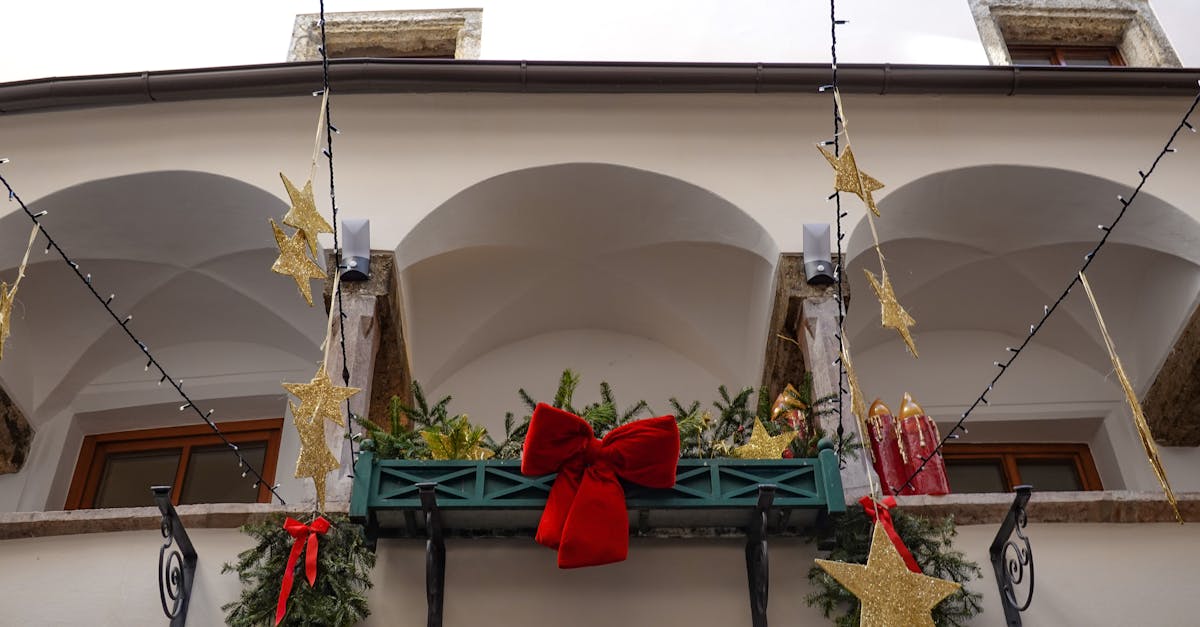
Table Of Contents
Maintenance of Waterproof Outdoor Lights
Regular maintenance is essential for ensuring the longevity and functionality of waterproof outdoor lighting. Over time, dirt, debris, and moisture can accumulate, potentially compromising the seal and effectiveness of the fixtures. It's important to inspect outdoor lighting periodically for any signs of wear or damage. Cleaning the lights with a soft cloth and mild detergent helps maintain brightness and prevents corrosion. During inspections, check for loose wiring or connections that may need tightening or replacement.
Another consideration for maintaining waterproof outdoor lighting involves seasonal changes. In regions with harsh weather conditions, taking steps to protect fixtures from snow, ice, or heavy rain can be beneficial. Covering lights during extreme weather events can help prolong their lifespan. Additionally, replacing any burnt-out bulbs promptly ensures that outdoor lighting remains effective and reliable. Taking these maintenance steps will preserve both the aesthetics and safety of your outdoor lighting setup.
Tips for Longevity and Performance
To ensure the longevity and performance of outdoor lighting, regular maintenance is crucial. This includes inspecting fixtures for any signs of wear and tear, such as rust or corrosion. Cleaning lenses and bulbs can also improve brightness and efficiency. Debris accumulation can block direct light, reducing visibility and putting added strain on the lighting system. Establishing a routine inspection schedule will help catch potential issues before they escalate, ensuring that outdoor lighting remains functional and effective throughout its lifespan.
Another key aspect of maintaining outdoor lighting is being mindful of the installation environment. Choosing locations that minimize exposure to extreme elements can considerably enhance durability. Utilizing fixtures with appropriate waterproof ratings and UV resistance helps protect them from weather conditions. Additionally, investing in high-quality materials will withstand the test of time and maintain performance under various conditions. Proper installation techniques can further safeguard against moisture infiltration and electrical issues, promoting overall safety and functionality.
Safety Standards for Outdoor Lighting
Safety standards for outdoor lighting are crucial for preventing accidents and ensuring reliable operation. Various organizations, such as the Underwriters Laboratories (UL), set guidelines for the safe use of electrical products in outdoor environments. These standards address factors like moisture resistance, energy efficiency, and protection against electrical hazards. Compliance with these regulations is necessary to guarantee that outdoor lighting fixtures can withstand the elements while minimizing risks to users.
Understanding national and local regulations helps homeowners select outdoor lighting that meets safety requirements. Local building codes may have specific mandates regarding fixture installation, wattage limits, and wiring methods. Adhering to these regulations not only enhances safety but also ensures that outdoor lighting systems function efficiently in different weather conditions. Awareness of these standards contributes to informed decisions when choosing and installing outdoor lighting fixtures.
Understanding National and Local Regulations
When selecting outdoor lighting, it is essential to understand the various national and local regulations that dictate safety and installation standards. These rules vary depending on the location, with some municipalities enforcing stricter guidelines to ensure public safety and comply with environmental concerns. Compliance with these regulations helps to avoid potential fines and ensures that outdoor lighting meets necessary performance requirements, especially in areas prone to extreme weather conditions.
Local building codes may address factors such as the maximum allowable height for fixtures, the recommended brightness levels, or even specific energy efficiency standards. Additionally, some regions may have regulations that dictate the type of materials used in outdoor lighting to enhance durability and reduce risks associated with weather-related damage. Staying informed about these rules is crucial for property owners and contractors alike to ensure the long-lasting effectiveness of outdoor lighting solutions.
The Role of Material Durability
Material durability plays a crucial role in the performance and longevity of outdoor lighting fixtures. Many factors contribute to how well these materials withstand environmental stressors, such as UV radiation, moisture, and temperature fluctuations. Common materials used in the construction of outdoor lighting include aluminum, stainless steel, and plastic composites. Each material has its own advantages and disadvantages, impacting both aesthetic appeal and functional resilience against the elements.
Choosing the right materials not only enhances the visual appeal of outdoor lighting but also ensures that fixtures can endure diverse weather conditions. For instance, aluminum is lightweight and resistant to corrosion, making it a favored choice for many outdoor applications. On the other hand, stainless steel offers a sleek finish and higher strength, contributing to durability. Understanding these material properties can significantly influence the decision-making process when selecting suitable lighting options for outdoor spaces.
Choosing the Right Materials for Outdoor Fixtures
Selecting the right materials for outdoor lighting fixtures is crucial for ensuring their durability and effectiveness. Common materials include aluminum, stainless steel, and durable plastics. Aluminum is lightweight and resistant to rust, making it a popular choice for many outdoor applications. Stainless steel offers greater strength and corrosion resistance, ideal for environments exposed to harsh weather conditions. Durable plastics can also provide a cost-effective option while offering a variety of styles and finishes.
When choosing materials, consider the environment where the fixtures will be installed. Coastal areas may require more corrosion-resistant materials due to saltwater exposure. Urban settings could pose different challenges, such as pollution and exposure to various weather conditions. It is essential to balance aesthetics with functionality, ensuring that the outdoor lighting not only enhances the landscape but also stands up to the rigors of outdoor life. Properly selected materials will extend the lifespan of the fixtures and enhance the overall safety and ambiance of outdoor spaces.
FAQS
What does the waterproof rating mean for outdoor lights?
The waterproof rating indicates the level of protection an outdoor light has against water intrusion. It is typically measured using the Ingress Protection (IP) rating system, which specifies the degree to which the fixture is protected from water and dust.
What is the best waterproof rating for outdoor lights?
The best waterproof rating for outdoor lights is typically IP65 or higher. An IP65 rating means the fixture is protected against water jets from any direction, making it suitable for most outdoor conditions.
How do I determine the right waterproof rating for my outdoor lighting needs?
Consider the specific environment where the lights will be installed. For areas exposed to heavy rain, snow, or splashes, look for fixtures with at least an IP65 rating. In less exposed areas, an IP44 rating may suffice.
Are all outdoor lights waterproof?
No, not all outdoor lights are waterproof. It is essential to check the waterproof rating before purchasing, as some fixtures may only be weather-resistant, which may not provide adequate protection in wet conditions.
How can I maintain the waterproof performance of my outdoor lights?
Regular maintenance is key to ensuring waterproof performance. Clean the fixtures to remove dirt and debris, check for any signs of wear or damage, and ensure that seals and gaskets are intact. Following the manufacturer's guidelines will also help prolong the lifespan of your outdoor lights.



